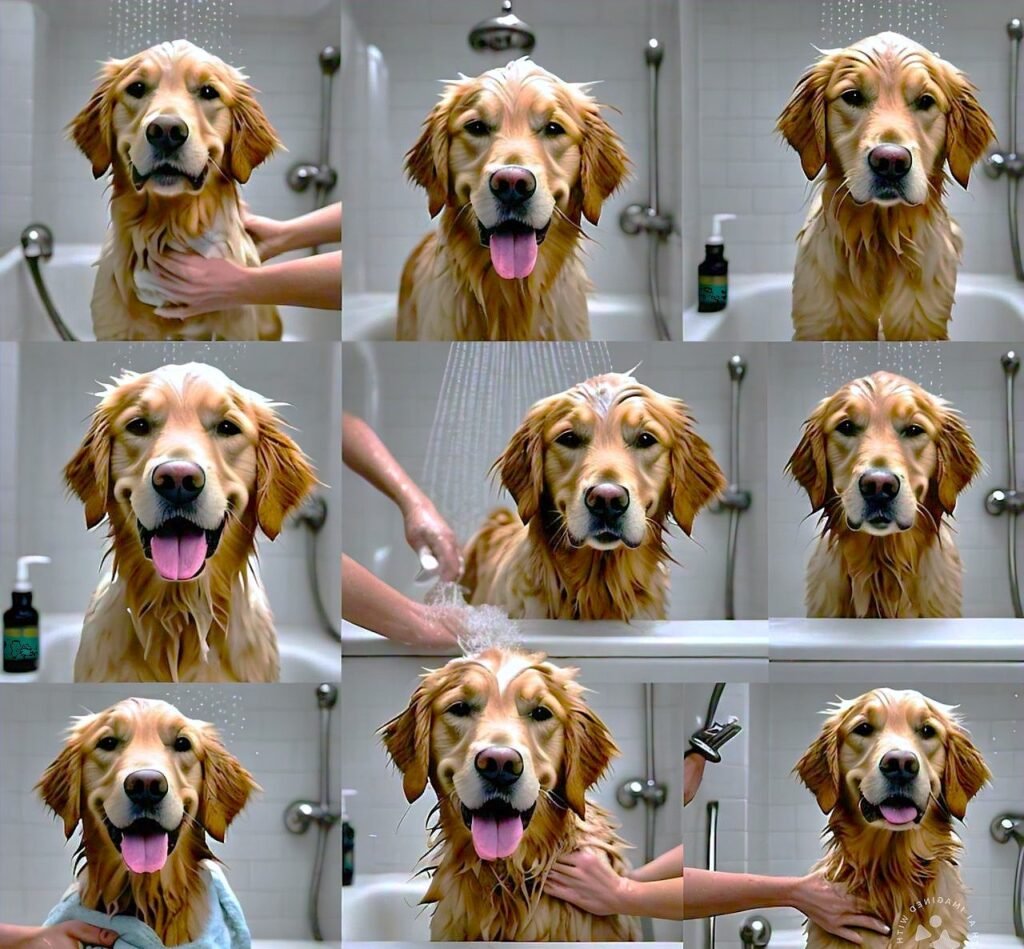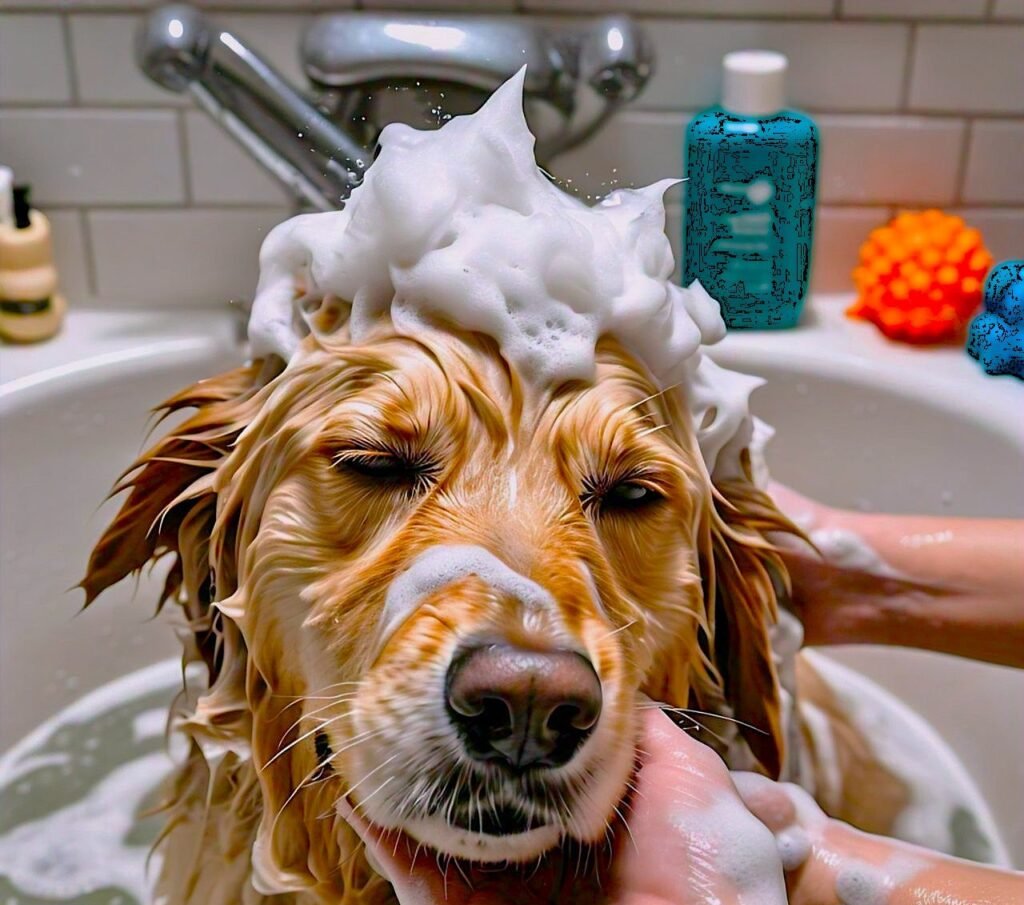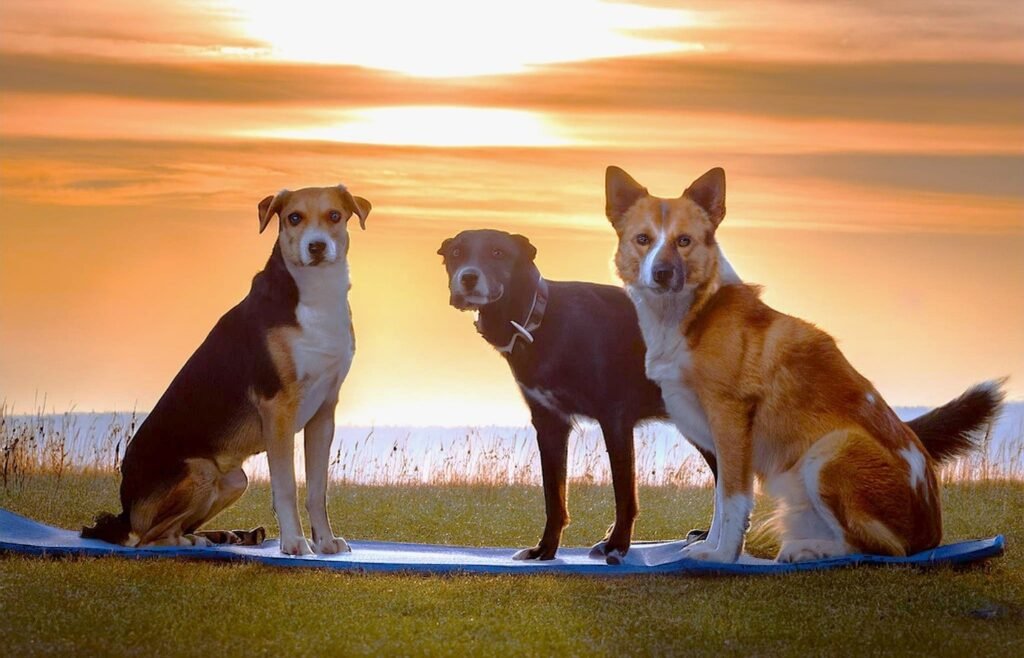How To Bathe Your Dog At Home: A Guide for a Happy, Clean Pup
Bathing your dog at home is not only necessary for proper pet care, but it is also an excellent opportunity to bond with your furry buddy. Bathe your dog maintain dog’s health and happiness, though, you must approach this duty with understanding and care.
In this detailed guide, we will lead you how to bathe your dog to through every step, from preparation to post-bath care, to make your dog’s bathing experience as stress-free and successful as possible.

Preparing for Bathe
Preparation is essential for ensuring that your dog’s wash goes well and without stress. Here’s how to prepare:
Before you begin, gather all the essential items:
- Dog shampoo (ideally pH-balanced and natural for sensitive skin)
- Towels
- Brush to get rid of loose hair and knots.
- Non-slip mat for bathtub or sink.
- Cotton balls to keep water out of your dog’s ears.
- Cup or spray nozzle for rinsing.
Bathing Your Dog: A Step-by-Step Guide
Now that you’re ready, it’s time to begin the bathing procedure. Follow these instructions for a complete and safe bath:

1. Look For Comfortable Environment
Ensure that the bathing room is warm, peaceful, and distraction-free. To keep your dog from slipping, place a non-slip mat down and keep everything at arm’s length.
2. Thoroughly Wet Dog’s Coat
Use lukewarm water to gently moisten your dog’s coat. Begin from the neck and work your way down to the tail. Avoid getting water directly into your ears, eyes, or nose.
3. Use A Shampoo
Use a small amount of shampoo made just for dogs and work it into their fur. Concentrate on parts that are likely to get dirty, such as the paws, underbelly, and tail. Scrub gently and not too forcefully, especially if your dog has delicate skin.
4. Rinse Thoroughly
Rinse the shampoo from your dog’s coat completely. Any remaining shampoo may cause skin discomfort. Use a cup or hose connection to rinse off the shampoo completely, especially in thick-coated breeds.
5. Use Conditioner—A Optional Step
If your dog’s fur is long or thick, use conditioner to untangle and soften the coat. Rinse it well, like you would with shampoo.
6. Pat Dry Your Dog
To eliminate extra water from your dog, gently towel dry them. You may use a blow dryer on a cold, low setting if your dog is tolerant. Be mindful of the heat, as dogs are more susceptible than humans.
Post-Bathe Care
After-bath care is equally vital as the bath itself. Here’s what to do after washing your dog:
Look for skin issues: After your dog has dried, look for symptoms of skin irritation, redness, or strange lumps. Bathing your dog on a regular basis allows you to monitor his or her skin health.
Re-Brush: Once your dog has dried, brush them again to remove any stray fur and minimize tangling, especially if they have a long coat.
Reward Your Dog: To promote great bath-time behavior, reward your dog with a treat or some playtime. This allows your dog to link bathing with pleasurable experiences.
DIY Ideas for Dog Shampoo

Simple, Natural Shampoo
For a mild, natural dog shampoo, combine one cup water, one cup apple cider vinegar, and a few drops lavender essential oil. This combination washes the coat and repels fleas.
Sensitive Skin Shampoo
For a gentle shampoo for dogs with sensitive skin, mix one cup water, one cup unscented Castile soap, and one tablespoon aloe vera gel.
Flea Repelling Shampoo
To make a flea-repelling shampoo, combine one cup water, one cup baby shampoo, and one tablespoon lemon juice. This natural cure repels fleas without using harmful chemicals.
Dog Bathing Tips: A Practical Guide
Controlling Dog Odor During Bathing
To control odor between bathing, use a dog-safe dry shampoo or wipes. These items can assist to refresh your dog’s coat without the need for a complete bath.
Dry Shampoo Alternatives:
Dry shampoos are a quick and handy method to clean your dog without using water. They are especially beneficial for dogs that are nervous about bathing or during the chilly months.
Waterless Bathing Options
Waterless shampoos and sprays might be an excellent option for dogs who hate water. The waterless bath is simple to use and do not require rinsing, making them great for rapid cleanups.
Use Hypoallergenic Shampoo
Choose a hypoallergenic, pH-balanced shampoo created exclusively for dogs with sensitive skin.
Avoid Frequent Baths
Overbathing can remove natural oils from the skin, causing dryness and irritation. Follow the recommended bathing frequency.
Final Thoughts
Bathing your dog at home can be an easy and stress-free experience with the proper preparation and understanding. Always consider your dog’s individual requirements, especially after giving birth or vaccines, and use supplies that are suitable for their skin type. Bathing your dog on a regular basis, done right, may keep them healthy, happy, and looking their best.
Frequently Asked Questions (FAQ)
Q: When can dog bathe after spay?
A: Wait at least 10-14 days after spaying before bathing your dog. For more precise guidance, see your veterinarian.
Q: How long after vaccine can dog bathe?
A: To avoid straining your dog’s immune system, wait 48 hours after vaccines before bathing them.
Q: How often should a dog bathe?
A: Bathing frequency varies according on your dog’s coat type and lifestyle. In general, every 1-3 months is acceptable, although certain dogs may require more regular bathing.
Q: What is the best type of shampoo for sensitive skin?
A: For dogs with sensitive skin, use a hypoallergenic, ph balance sensitive skin natural dog bathe shampoo, which is devoid of harsh chemicals and perfumes.
Q: When can my dog bathe after giving birth?
A: A dog can usually be bathed after giving birth when the puppies are around 2-4 weeks old. Make sure the mother is comfortable and stress-free, and use a soft, natural shampoo that will not bother her skin.


Pingback: Tips to Prevent and Treat Dog Parasites: Flea, Ticks & Heartworms - PetsCarePedia
Pingback: Why Is Dog Exercise Important: The Need for Physical and Mental Exercise - PetsCarePedia